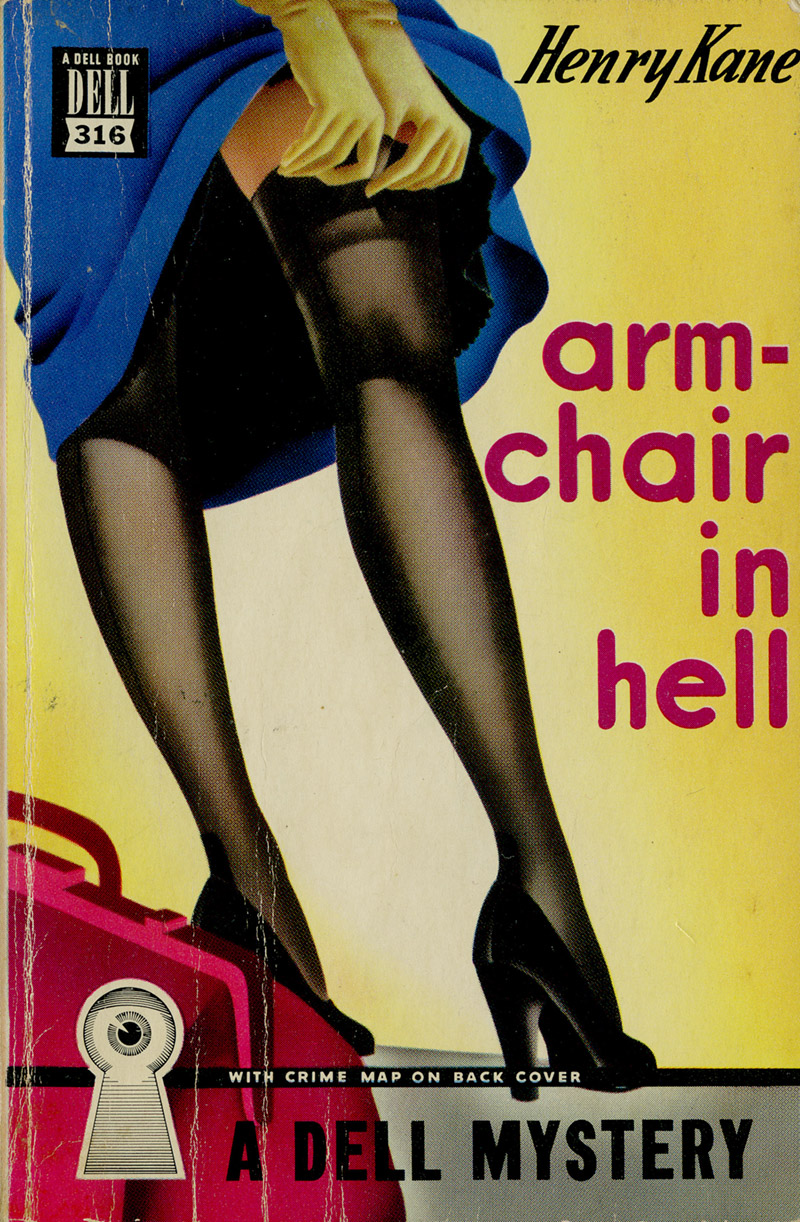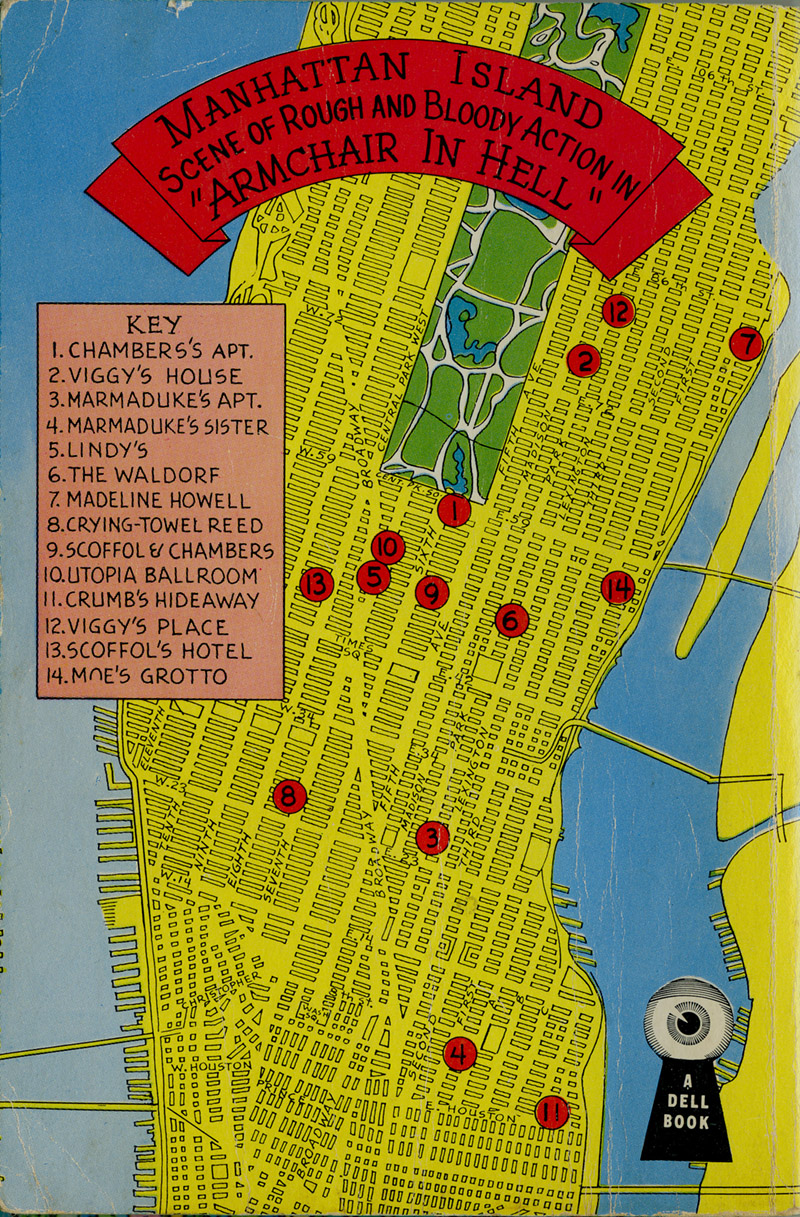
Gilligan at Retrospace had a fun post today complaining about DVD covers versus the films original posters. Video releases of old films rarely live up to the advertising budget that was spent when the film was new. By now what the film is about is already part of our vocabulary thus the need for images to market isn't the same. There are a lot of variables that go into marketing something old, and one of them is how to market to the current audience.
Books are the same. Take a classic like Dickens Oliver Twist and dig up how many different book jackets/covers have been designed over the years and you probably won't have enough shelf space for all of them. And for each reissue of the title what did editorial think was the image to put forth for the market of the day?

Even trashy paperbacks vary from decade to decade, go through various cover designs. The one below is one in my collection. I have no idea what this book is about from this cover and the reissue I found online (to the left) doesn't make things any clearer. Editorial wasn't really marketing the story in either edition. They were marketing sex. That was their only interest. The one to the left was from 1956, the one below is from the 1940s. (To see the one to the left larger click here. The site also offers some sort of way to turn the cover into a puzzle.)

Click on either image to see them larger.
I bought this book for the cover. Plain and simple. I found it in a used book store and loved the illustration. It was part of the Dell "eye-in-the-keyhole" or "mapback" series. This was book no. 316 and included a map on the back showing heaven knows what. The front cover would work today, it's timeless.
Dell's earliest venture into paperback publishing began because of its close association with Western Publishing. ". . . Dell needed paper, which Western had in 1942, and because Western by this time needed printing work, which Dell could supply in the form of its new paperback line. So Dell Books was born, created by Delacorte of Dell and Lloyd E. Smith of Western."Dell began publishing paperbacks in 1942 at a time when mass-market paperbacks were a relatively new idea for the United States market — its principal competitor, Pocket Books, had only been publishing since 1939. An examination of paperback books available at this time shows no consensus on standardization of any feature; each early company was attempting to distinguish itself from its competitors. "Dell achieved more variety than any of its early competitors. It did so, at first, with an instantly identifiable format of vibrant airbrushed covers for its predominantly genre fiction, varying 'eye-in-keyhole' logos, maps on the back covers, lists of the books' characters, and 'tantalizer-pages'. The design was merchandising genius; it successfully attracted buyers, it sold books."The first four books did not feature maps on the back cover; this began with Dell #5, Four Frightened Women by George Harmon Coxe. (A later re-issue of Dell #4, The American Gun Mystery by Ellery Queen, added a map.) The map was meant as an aid to the reader, to show the location of the principal activity of the novel. Some were incredibly detailed; others somewhat stylized and abstract. The books were almost immediately known as "mapbacks", and that nomenclature has lasted among collectors to this day. The maps were "delicate and detailed".The novels in the mapback series were primarily mysteries/detective fiction, but ran the gamut from romances (Self-Made Woman by Faith Baldwin, #163) to science fiction (The First Men in the Moon by H.G. Wells, #201), war books (I Was A Nazi Flyer by Gottfried Leske, #21 and Eisenhower Was My Boss by Kay Summersby, #286), many westerns (Gunsmoke and Trail Dust by Bliss Lomax, #271), joke books (Liberty Laughs, Cavanah & Weir, #38), and even crossword puzzles (Second Dell Book of Crossword Puzzles, ed. Kathleen Rafferty, #278, one of the rarest titles today). There were a few movie tie-in editions (The Harvey Girls by Samuel Hopkins Adams, #130, and Rope as by Alfred Hitchcock, #262) and the occasional attempt at more artistic non-genre fiction (To A God Unknown by John Steinbeck, #407). Novels which are today long forgotten, by largely unknown authors (Death Wears A White Gardenia, by Zelda Popkin, #13) are in the same series as valuable original paperback editions of famous authors (A Man Called Spade, by Dashiell Hammett, #90). "The back cover map was very popular with readers and remains popular with collectors . . . the Dell "mapbacks" are among the most well-known vintage paperbacks." (SOURCE: Wikipedia)
To see an example of a dreadful book jacket where they tried to be too literal with something in the plot take a look at my post AARON MARC STEIN, The Dead Thing In the Pool. They'd have been smarter trying to sell sex.













No comments:
Post a Comment